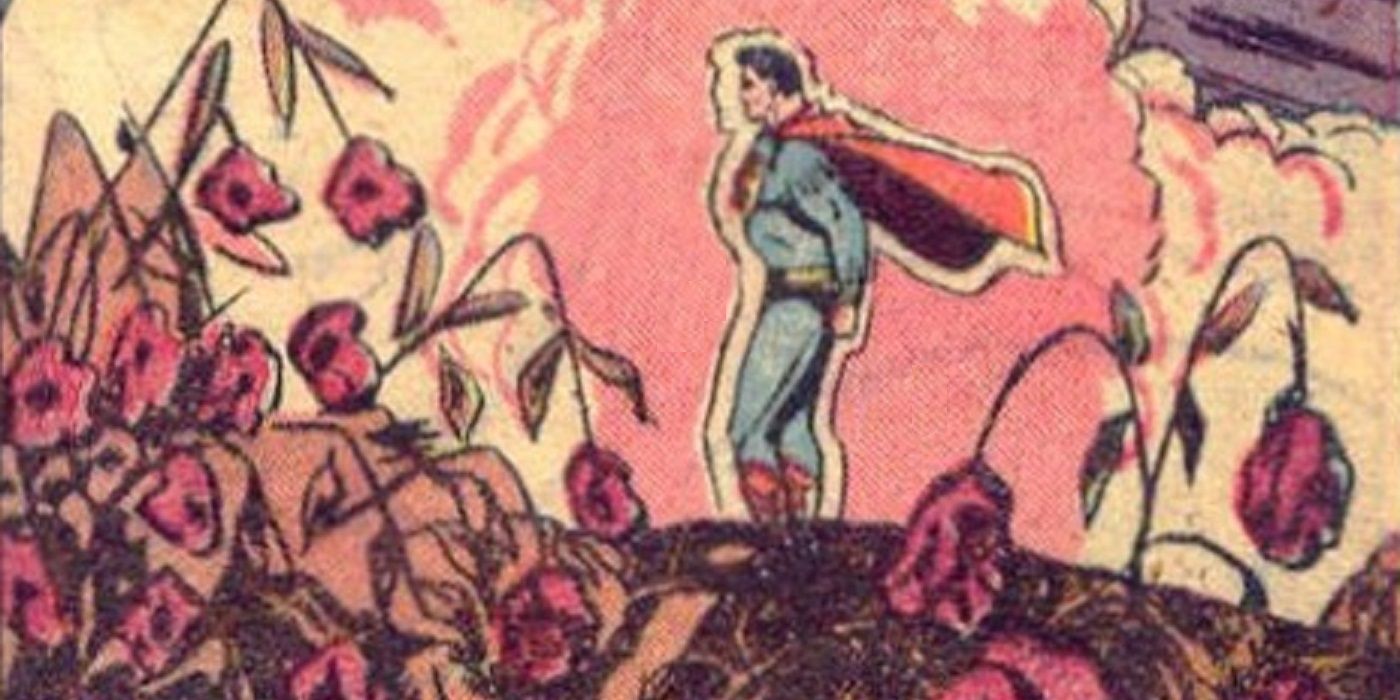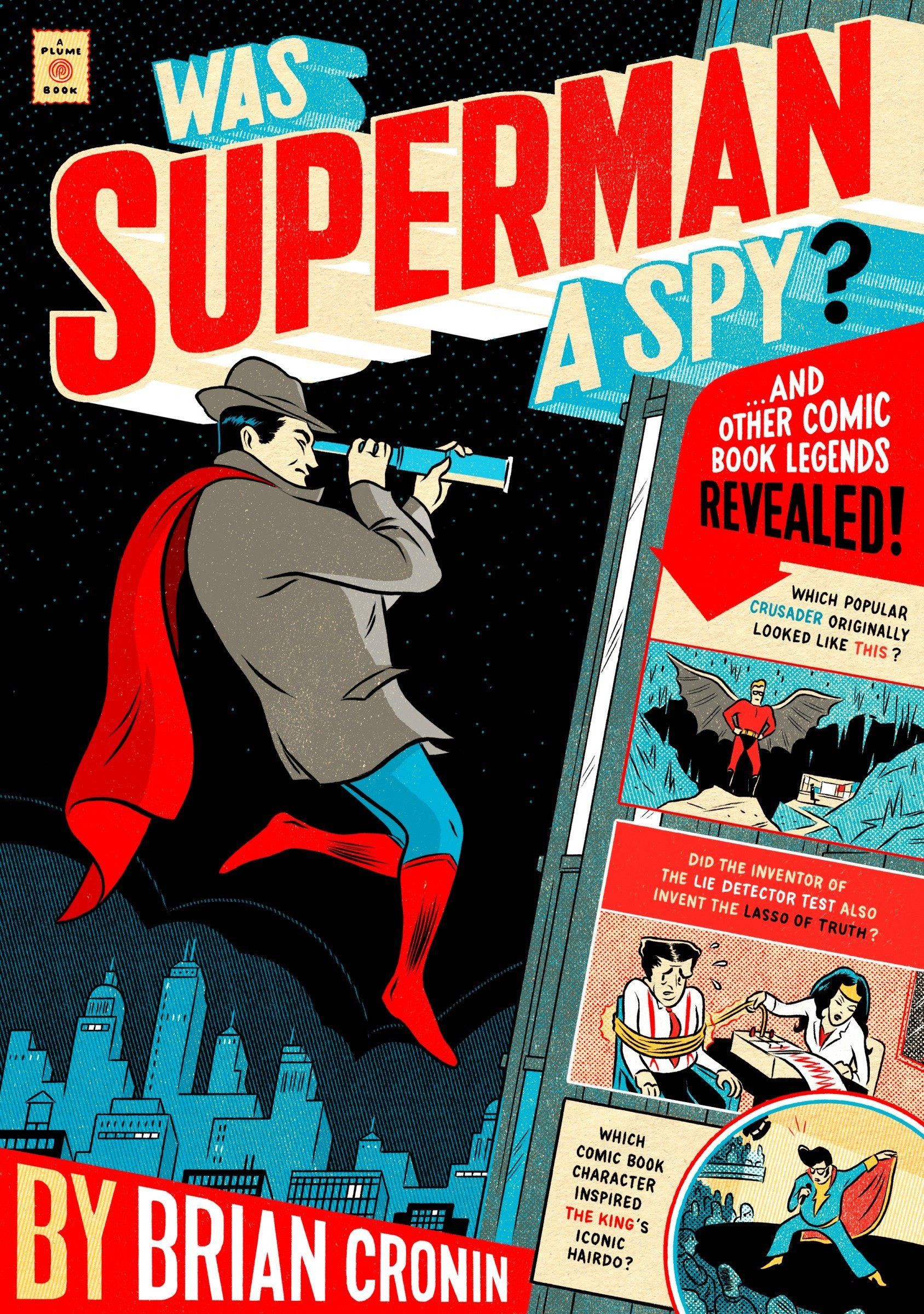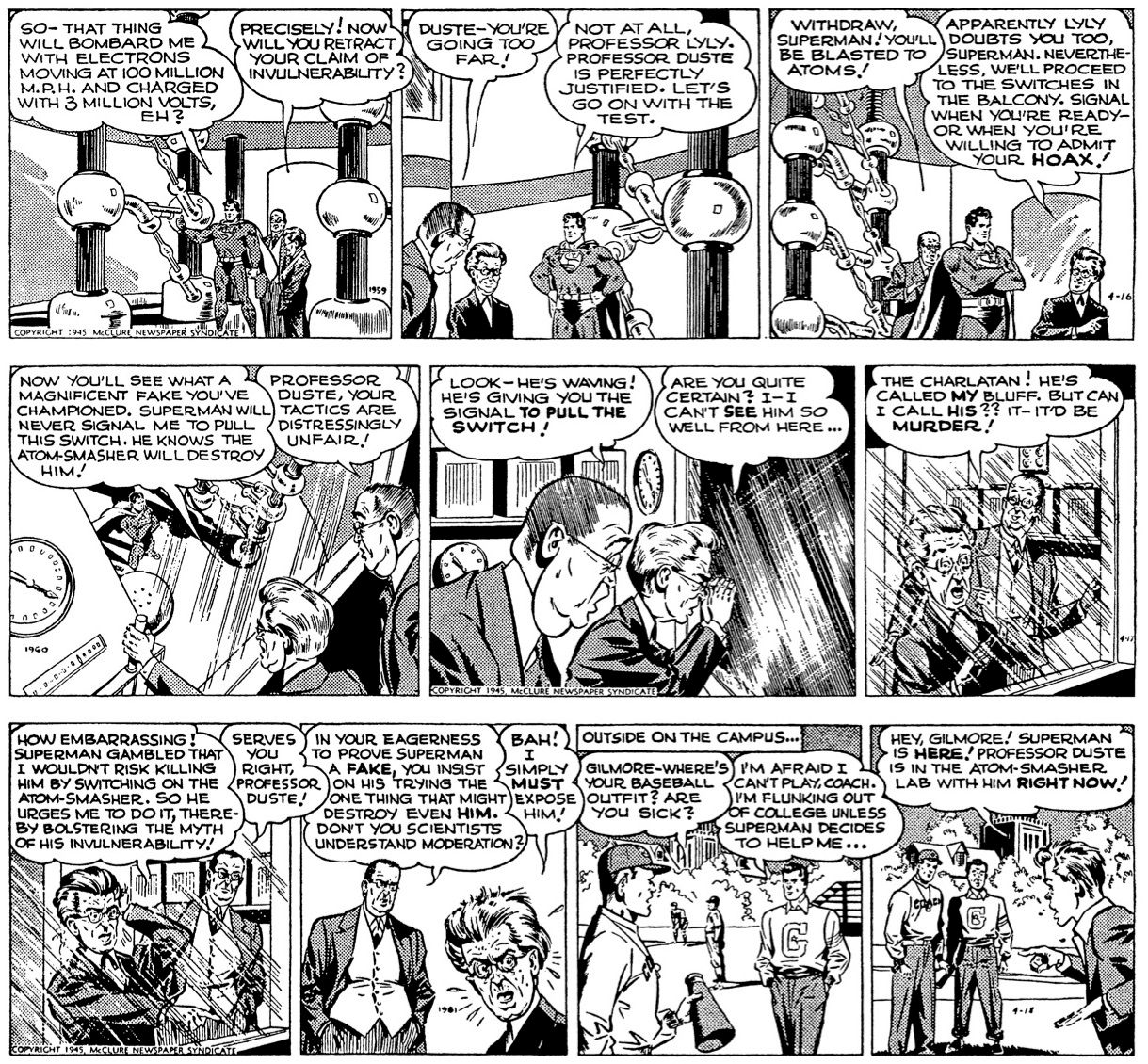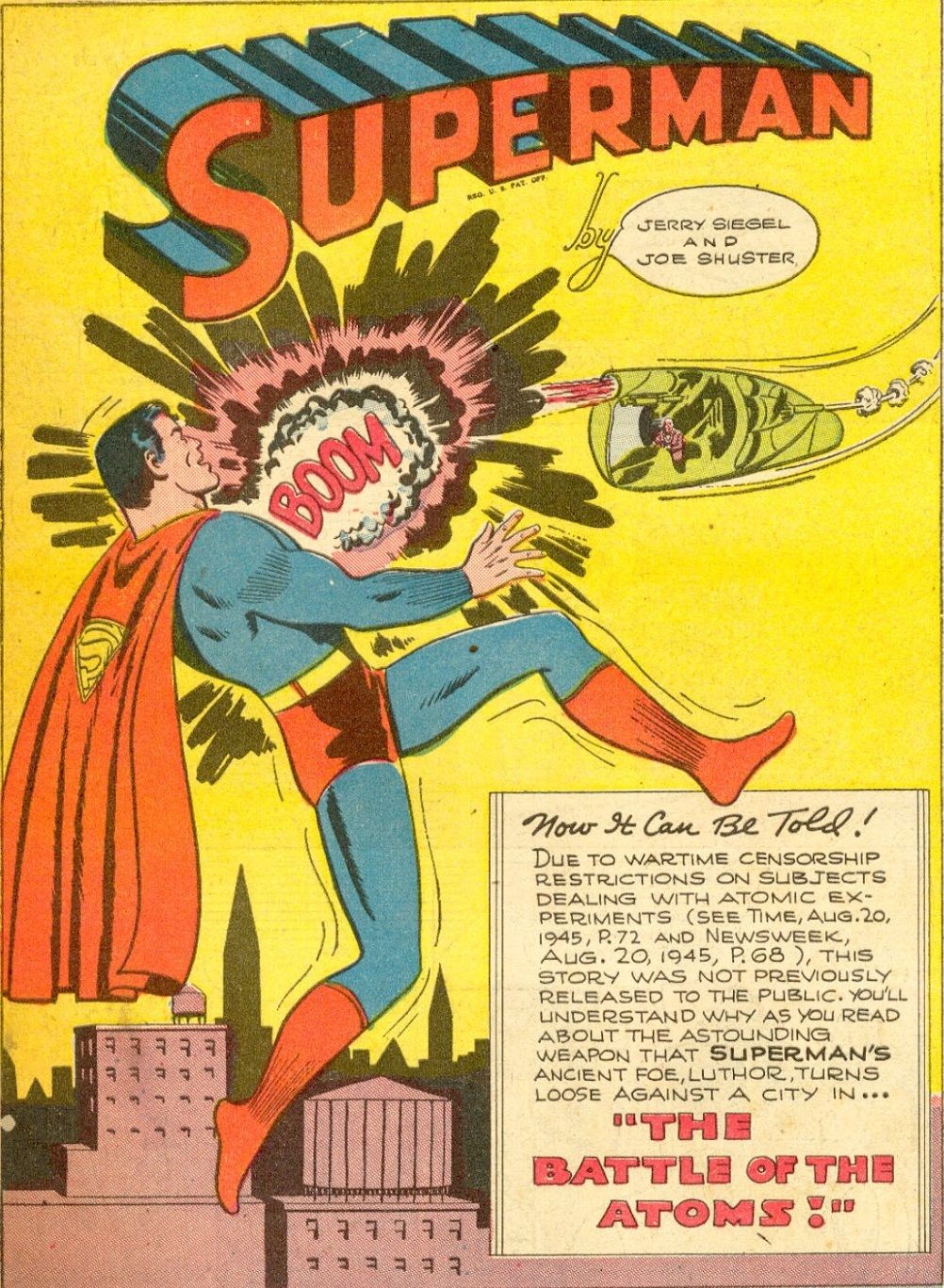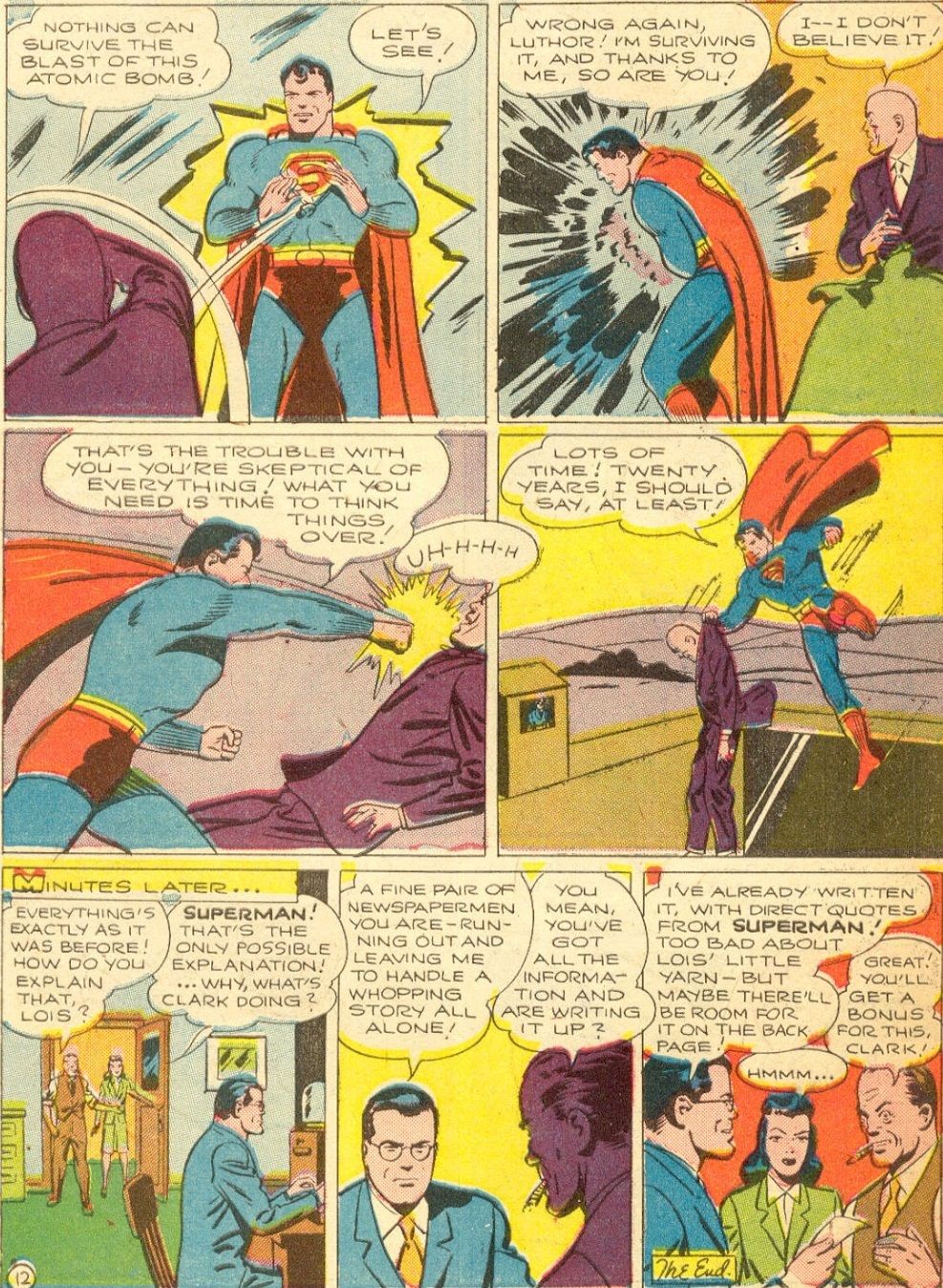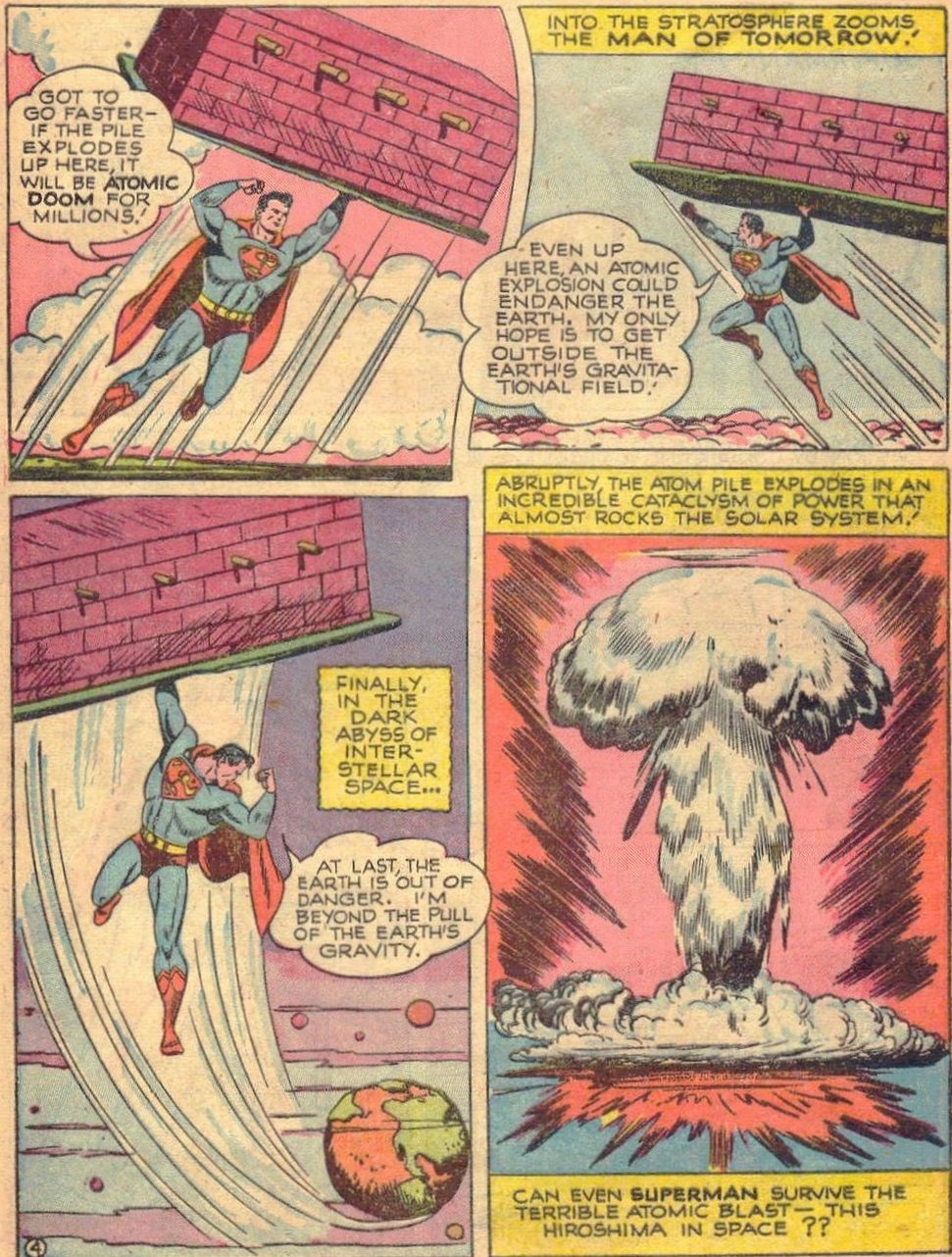In every Look Back, we examine a comic book issue from 10/25/50/75 years ago (plus a wild card every month with a fifth week in it). This time around, we head back fifty years to July 1948 for a twisted Superman story where he became a danger to society by becoming radioactive, along with his bizarre solution to his problem.
Years ago, my first book came out, called Was Superman A Spy? And Other Comic Book Legends Revealed.
The title of the book was a reference to one of my favorite old Comic Book Legends Revealed columns about how the U.S. War Department took issue with the Superman comic strip having a storyline involving atomic energy, specifically the use of a cyclotron in a series of strips by writer Alvin Schwartz and artist Wayne Boring.
However, what’s interesting is that that storyline actually WASN’T the first time that the War Department had gotten involved in Superman comics! In fact, the other time, the War Department actually succeeded in getting to a Superman story BEFORE it came out.
There was a story called “Battle of the Atoms” that was set to be released in an early 1945 issue of Superman (#34, to be precise).
The War Department asked them to hold off on the story and so it did not see print until eight months later, well after the United States had used an ACTUAL atomic bomb on Japan (TWICE).
The problem that the War Department had at the time was that they would periodically check in on what the big comic book companies were up to, but they really didn’t think it was worth their effort, so they were continually trying to push for the companies to just self-report sketchy stuff like any discussion about atomic energy.
What’s hilarious, of course, is that the actual story (by Don Cameron, Pete Riss and George Roussos), was not even really remotely connected to actual atomic energy.
The splash page references the conflict (and it is funny to see the comic book story actually bragging about the fact that it was censored, as if it were a mark of pride to be censored by the government during the war)…
But the story is really just about Luthor doing some experiments when Lois Lane and Clark Kent happen upon his lab. Honestly, a lot of the story involved the rivalry between Lois Lane and Clark Kent, as they were vying for the story of what was going on in the laboratory and Luthor, naturally, did not want them to get involved there at all, so he sends some goons after them, but Superman interrupts them and saves Lois (and Clark, of course, but Clark isn’t there when she is saved). Luthor freaks out, and decides to fly to the Daily Planet and destroy it before Lois can write about what she saw in his lab.
Superman, naturally, intercepts Luthor on the way to the Daily Planet and they have a pretty cool aerial battle, but the whole thing is just over the top and not realistic at all. I don’t mean that in a negative way, though. It’s a cool story, but it just isn’t anything based in reality. It’s just an over-the-top super-battle between Superman and Luthor’s ship.
Finally, though, when Luthor meets Superman head on, Luthor then throws an “atomic bomb” at Superman to no avail…
Hilariously, once the government was no longer worried about people being scared of atomic energy, DC then did a Superman comic where the Man of Steel became literally deathly radioactive!, in July 1948’s Action Comics #124!
How did Superman get the point where his touch burned a bird to death?
In the opening story in the issue, “A Superman of Doom!” the
Superman volunteered to help get rid of some dangerous atomic material. He took it into outer space (he literally says “Up, Up and Away” as he flies it into outer space) and it exploded outside the Earth’s atmosphere….
But in the process, the Man of Steel became radioactive. He didn’t realize this until he flew near a bird and IT BURST INTO FLAMES, PEOPLE!!!
The writer of this story is lost to history, but the artist was the great Al Plastino, and boy, that panel of Superman destroying all of the flowers in a field as he walks in it? INTENSE!
So naturally, Superman being unable to get close to any living creature without them bursting into flames was a major news story, but once it was reported, the criminals of Metropolis assumed that it was open season on the city.
What was Superman’s nonsensical solution to his radiation problem?
Superman, though, was initially able to take them on using long distance powers, including an amazing sequence where he literally used his VOICE to sing a note that destroyed some buildings to stop some bad guys…
You would have to think that there was an easier way of doing that, no?
In any event, some smart criminals kidnap Lois Lane, and hold her hostage. Superman, though, makes a suit out of lead and flies in to save Lois (as her literal knight in armor)..
If you’re wondering, “But can’t he not see through lead with his X-Ray vision?” Well, let’s just say that that weakness was not consistently applied, and it was ignored here. Luckily, the lead suit eventually absorbed the excess radiation and Superman was back to normal……
That was a heck of a story, right? The panel where Superman realizes he might never be near people again? That was some severe pathos right there. And I still can’t believe that they literally had a bird catch fire and die from Superman’s radioactivity. That was hardcore.
If you folks have any suggestions for August (or any other later months) 2013, 1998, 1973 and 1948 comic books for me to spotlight, drop me a line at brianc@cbr.com! Here is the guide, though, for the cover dates of books so that you can make suggestions for books that actually came out in the correct month. Generally speaking, the traditional amount of time between the cover date and the release date of a comic book throughout most of comic history has been two months (it was three months at times, but not during the times we’re discussing here). So the comic books will have a cover date that is two months ahead of the actual release date (so October for a book that came out in August). Obviously, it is easier to tell when a book from 10 years ago was released, since there was internet coverage of books back then.
